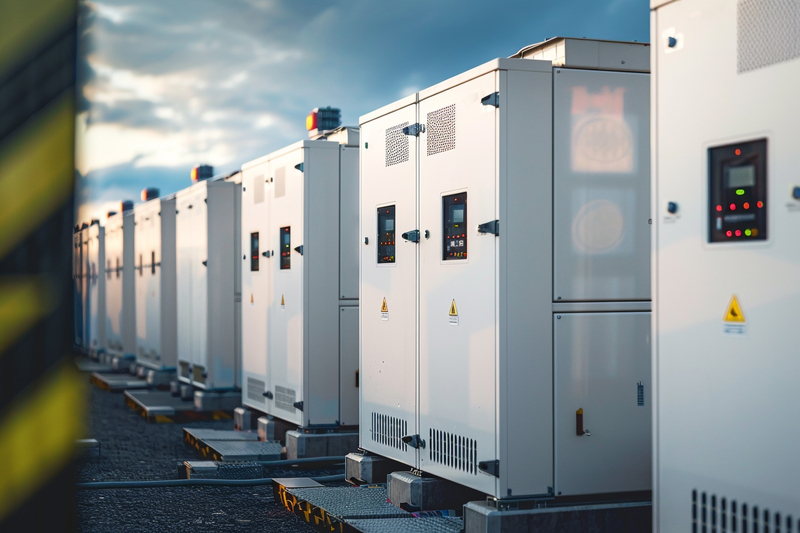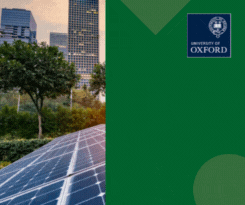
Photo: Michael-Berkowitz-President-of-100-Resilient-Cities
What makes a resilient city?
15 February 2015
by Richard Forster
Jonathan Andrews spoke with Michael Berkowitz, President of 100 Resilient Cities, about the importance for cities to invest in resiliency measures
You’ve been working with 100 Resilient Cities for just over a year now. What has surprised you the most in the role?
There has been so much that’s surprising and notable about the last year. One may be just how much cities are eager to learn from each other. Now that our network of Chief Resilience Officers [100RC] is beginning to take shape, we’re seeing constant collaboration. And in our recent CRO summit in New Orleans, sparks were flying as these city leaders helped each other solve their city challenges.
This dynamic works in all directions, too. It’s not just the small cities learning from the big cities, or the developed teaching the developing cities. The information and knowledge sharing goes in both directions, and it’s an inspiring thing to watch.
What is the ultimate goal of 100 Resilient Cities?
100 Resilient Cities is dedicated to helping cities around the world become more resilient to the physical, social and economic challenges that are a growing part of the 21st century. 100RC supports the adoption and incorporation of a view of resilience that includes not just the shocks – earthquakes, fires, floods, etc – but also the stresses that weaken the fabric of a city on a day to day or cyclical basis. Examples of these stresses include high unemployment; an overtaxed or inefficient public transportation system; endemic violence; or chronic food and water shortages. By addressing both the shocks and the stresses, a city becomes more able to respond to adverse events, and is overall better able to deliver basic functions in both good times and bad, to all populations.
Your background is largely from the private sector, including banking. Do you think cities are listening more when you describe the financial implications if they do not take action to become resilient?
And it has two components: first, it refers to the difference between how disruptive a shock or stress might be to a city that has made resilience investments compared to where city would be if it hasn’t invested in its resilience. Second, it describes the co-benefits that investing in resilience can yield to a city: job creation, economic opportunity, social cohesion and equity.
A key aim for a city joining the 100 Resilient Cities is the appointment of a Chief Resilience Officer (CRO) funded by the Rockefeller Foundation. How many cities currently have a CRO? Are 100RCs personnel involved in the appointment process?
To date, 21 of our 32 first round cities have publically announced their CRO, and many more are actively engaged in their search to find the right candidate for the job. This past November, we formally kicked off the 100RC network by convening the first ever Chief Resilience Officer Summit in New Orleans where CROs were able to share their experiences as the vanguards of the global resilience movement as well as leverage the City of New Orleans as a living lab for urban resilience.
As for the selection process, that is led and run by the city. 100RC works with the city to develop a job description, and is happy to provide advice and guidance during the selection and hiring process.
We we have a truly impressive group of people who are deeply dedicated to helping cities become more resilient.
What is a prerequisite for a city applying to become a member? How do you choose the winning cities?
The 100 Resilient Cities Challenge is the application process by which cities join our network. 100RC selected a first group of 32 cities in December 2013 and a second group of 35 cities in December 2014. The following round of the 100 Resilient Cities Challenge is set to open in 2015.
Members of the 100 Resilient Cities team and a panel of expert judges review applications from prospective cities. The judges are looking for innovative mayors, a recent catalyst for change, a history of building partnerships and an ability to work with a ride range of stakeholders.
In terms of funding, do all cities receive the same level of funding? Can you explain how the funding is allocated and what other forms of assistance are given?
Through their partnership with 100 Resilient Cities, cities will receive four types of support. First is financial and logistical guidance for establishing the Chief Resilience Officer position that will lead the city’s resilience efforts. Second, 100RC will provide technical support to develop a holistic resilience strategy that reflects on each city’s distinct needs.
Third is access to an innovative platform of services to support strategy development and implementation. Platform partners come from the public, private, and non-profit sectors and offer tools in areas such as innovative finance, technology, infrastructure, land use, and community and social resilience. Lastly, cities will be included in the 100 Resilient Cities Network to share knowledge and best practices with other member cities.
Cities only receive direct funding to hire a CRO, and those costs vary from city to city. Therefore, it is important to note that cities will not be receiving a cheque for US$1 million. However, the value of our core offerings will likely far exceed that amount for each city.

You spoke recently at the Smart Cities Expo in Barcelona. What role can smart cities play in urban resilience?
Although resilient cities incorporate several aspects of smart cities, it goes far beyond this concept because of the holistic and proactive approach it embodies. People often ask the same question around sustainability and Disaster Recovery and Response (DRR). While sustainability is about putting the world into long-term balance amidst the depletion of natural resources, resilience looks for ways to make systems endure and even thrive in an imbalanced world.
Resilience is also broader than DRR, as the latter concept is about reducing the damage caused by natural hazards while resilience is about developing a proactive and integrated plan addressing both shocks and stresses, from natural disasters to adverse socio-economic trends.
In essence, resilience doesn’t involve merely coping and adaptive strategies, but also transformative actions to make cities better, for both the short and long-term, the good times and bad.
What sort of progress has the first set of 32 cities achieved so far? How do you plan to release the results or metrics on progress?
Though we are still very much in the early stages of our engagement with our first 32 cities, we have already seen significant signs of progress. Twenty-one of our cities have publicly announced their Chief Resilience Officers, a position that this time last year did not exist anywhere in the world.
We have begun the strategy process in over half of our cities, and upon the completion of this six to nine month process, they will release their resilience strategies. These documents will lay out the city’s resilience building priorities and initiatives to address those priorities. We’re also working with Arup to develop a City Resilience Index that will help us understand the progress cities are making on their resilience journey.
The network will hit 100 cities next year in the final round of announcements. What are the plans after this?
Stay tuned!







